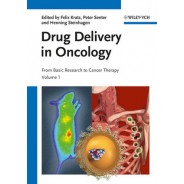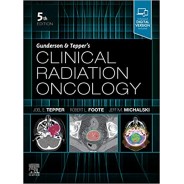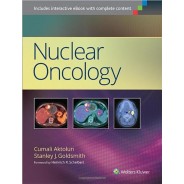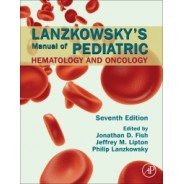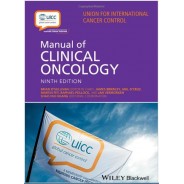Sipariş listesinde ürün yok
Ürün başarıyla alışveriş sepetinize eklendi
Sepetinizde 0 ürün bulunmaktadır. Sepetinizde 1 ürün bulunmaktadır.
Oncology
- KAMPANYA ÜRÜNLERİ
- Türkçe Tıp Kitapları
- Acil Tıp
- Adli Tıp ve kriminoloji
- Aile Hekimliği
- Geleneksel ve Tamamlayıcı Tıp
- Anatomi
- Anesteziyoloji ve Ağrı
- Biyoloji ve Genetik
- Biyomedikal Mühendisliği
- Biyokimya
- Çocuk Cerrahisi
- Çocuk Sağlığı ve Hastalıkları
- Çocuk ve Ergen Psikiyatrisi
- Dahiliye
- Dermatoloji
- Endokrinoloji
- Farmakoloji
- Fiziksel Tıp ve Rehabilitasyon
- Fizyoloji
- Gastroenteroloji
- Genel Cerrahi
- Geriatri
- Göğüs Hastalıkları
- Göğüs - Kalp Damar Cerrahisi
- Göz Hastalıkları
- Halk Sağlığı
- Hematoloji
- Histoloji ve Embriyoloji
- İnfeksiyon Hastalıkları
- Kadın Hastalıkları ve Doğum
- Kardiyoloji
- Kulak Burun Boğaz Hastalıkları
- Mikrobiyoloji immunoloji
- Nöroşirürji
- Nefroloji
- Nöroloji
- Nükleer Tıp
- Onkoloji
- Ortopedi ve Travmatoloji
- Patoloji
- Plastik Cerrahi
- Sağlıklı Yaşıyoruz
- Psikiyatri
- Radyasyon Onkoloji
- Radyoloji
- Romatoloji
- Tıp Tarihi Deontoloji Sözlük
- Tıbbı İstatistik Araştırma
- Üroloji
- Yoğun Bakım
- Tıp ve Sağlık Hukuku
- Spor Hekimliği
- Fizyoterapi, Rehabilitasyon ve Spor Hekimliği
- Alerji ve İmmünoloji
- İngilizce Tıp Kitapları
- USMLE & Board Review
- Anatomy
- Anaesthesiology
- Allergy & Clinical Immunology
- Audiology
- Biochemistry
- Cardiology
- Critical Care
- Complementary Medicine
- Dentistry
- Dermatology
- Developmental Biology
- Emergency Medicine
- Endocrinology
- Family Medicine
- Forensic Medicine
- Gastrenterology
- Genetics
- Geriatrics
- Hematology
- Histology
- Immunology
- Internal Medicine
- Infectious Disease
- Life Sciences
- Microbiology
- Nephrology
- Neurology
- Neurosurgery
- Nuclear Medicine
- Nursing
- Obstetrics and Gynecology
- Oncology
- Ophthalmology
- Orthopaedics
- Otolaryngology
- Pain Medicine
- Pathology
- Pediatri
- Pharmacology
- Physical Medicine and Rehabilitation
- Physiology
- Plastic Surgery
- Psychiatry
- Pulmonary Medicine
- Radiation Oncology
- Radiology
- Rheumatology
- Sleep Medicine
- Surgery
- Thoracic and Cardiovascular Surgery
- Toxicology
- Urology
- Veterinary
- Diş Hekimliği Kitapları
- Eczacılık Kitapları
- Beslenme ve Diyet Kitapları
- Veteriner Hekimlik
- DUS Kitapları
- DUS Akademi Konu Kitapları Serisi
- DUS için Açıklamalı Deneme Sınavları Serisi
- DUS Spot Bilgiler Serisi
- Miadent Konu Kitapları Serisi
- Miadent Soru Kitapları Serisi
- DUS Çıkmış Soru Kitapları
- DUSDATA Ders Notları
- DUS Review Serisi
- DUS Çalışma Soruları Serisi
- DUS Akademi Soru Kitapları Serisi
- Diğer Kitapları Serisi
- TUS Kitapları
- Çıkmış TUS Soru Kitapları
- 41 Deneme Serisi
- Tusmer
- Klinisyen Konu Kitapları Serisi
- Optimum Serisi
- Premium Serisi
- PRETUS Deneme Sınavları Serisi
- ProspekTUS Serisi
- Klinisyen Soru Kitapları Serisi
- Tusdata Ders Notları
- Tıbbi İngilizce
- Vaka Soruları Serisi
- Tüm Tus Soruları
- Hızlı Tekrar Serisi
- UTS Serisi
- KAMP ÖZEL NOTLARI
- Meditus Serisi
- YDUS Kitapları
- Hemşirelik ve Ebelik kitapları
- SAĞLIK BİLİMLERİ
- EĞİTİM BİLİMLERİ
- Değerler Eğitimi
- Eğitim Programları ve Öğretim
- Eğitim Psikolojisi
- Eğitim Yönetimi ve Denetimi
- Eğitimde Drama
- Eğitim Temelleri
- Eğitim Teknolojileri
- Okul Öncesi Eğitim
- Ortaokul Öğretmenliği
- Öğretmenlik Eğitimi Bölümleri
- Ölçme ve Değerlendirme
- Özel Eğitim
- Psikolojik Danışmanlık ve Rehberlik
- Sınıf Öğretmenliği
- Sınıf Yönetimi Etkili Öğretim
- İLETİŞİM
- İŞLETME
- İKTİSAT / EKONOMİ / MALİYE
- MİMARLIK - SANAT
- BİLİM TEKNİK
- MÜHENDİSLİK - TEKNİK
- FEN BİLİMLERİ
- ÇOCUK VE GENÇLİK KİTAPLARI
- BEŞERİ/SOSYAL BİLİMLER
- ÇEVRE ve YER BİLİMLERİ
- GIDA TARIM ve HAYVANCILIK
- BİYOMEDİKAL MÜHENDİSLİĞİ
- SEYAHAT TURİZM
- SOSYAL ÇALIŞMALAR
- SPOR BİLİMLERİ
- YÖNETİM - SİYASET - ULUSLARARASI İLİŞKİLER
- SINAVLAR HAZIRLIK
- ÖNERİLEN ÜRÜNLER
- Çok Satan Romanlar
- E-Kitaplar
- AYBAK
- Kırtasiye
 Daha büyük görüntüle
Daha büyük görüntüle Therapeutic Progress in Oncology: Towards a Revolution in Cancer Therapy?
9781786304933
BU KİTAP İÇİN ÖN SİPARİŞ ALINMAKTADIR BİLGİ ALMAK İÇİN MAĞAZAMIZI ARAYINIZ
4 388,53 TL
3 510,83 TL
-20%
KDV Hariç: 3 510,83 TL
- Yorum Yaz
DESCRIPTION
The combined effects of population growth and aging have led to an increase in the number of cancers. Preventing, diagnosing, treating and curing cancer are therefore, more than ever, imperatives facing medicine especially to continue the decrease in cancers mortality rates and to improve the quality of survival.
Over time, the classic modes of treatment (surgery, external beam radiotherapy, chemotherapy) have become more refined and efficient. From the beginning of this century, new therapeutic options have been developed: targeted cancer therapy, targeted radionuclide therapy and immunologic therapies based on monoclonal antibodies, cellular therapy and vaccinations. Artificial intelligence and machine learning are also being introduced to the field of oncology.
Starting with the basic scientific principles relevant to oncology, this book explains and makes these concepts and innovations accessible to a wide audience especi...
TABLE OF CONTENTS
Preface ix
Acknowledgments xi
Introduction xiii
Chapter 1. Genomics and Epigenetics 1
1.1. DNA, RNA and genetic code 1
1.2. Sequencing and genomics 5
1.3. Transcriptome and proteome 10
1.4. Epigenetics, the missing link 13
Chapter 2. Overview of Cancer Chemotherapy 19
2.1. The introduction of an innovative method 20
2.2. Nitrogen mustards, the first revival 21
2.3. Anti-metabolites, the potential for chemotherapy finally revealed 25
2.4. Natural products in the first line 28
2.4.1. Antimitotic agents 28
2.4.2. Topoisomerase inhibitors 30
2.5. Cisplatin and organoplatin derivatives 32
2.6. An evolving therapeutic approach 34
2.6.1. Combinatorial chemotherapy 35
2.6.2. Adjuvant chemotherapy 36
2.7. Targeted therapies 38
Chapter 3. Immunology and the Immune System 41
3.1. From variolation to vaccination 42
3.2. The hegemony of the humoral theory 44
3.2.1. Instructive theory versus selective theory 45
3.2.2. Determining the chemical nature of antibodies 47
3.3. Towards a conciliation between cell theory and humoral theory 48
3.4. A complex and specific mode of action of a so-called adaptive immunity in collaboration with an innate immunity 51
3.4.1. The study of organ transplants for a better understanding of the immune system 51
3.4.2. The predominant role of MHC molecules on T cell reactivity 55
3.4.3. Other membrane molecules with a key role 56
3.4.4. B lymphocytes and antibody production 57
3.4.5. A collaboration with innate immunity 59
3.4.6. Cytokines, immune system messengers 60
3.5. Summary of innate and adaptive immune responses 61
Chapter 4. The Development of Immunotherapy 63
4.1. Immunosuppressive treatments for graft tolerance 63
4.2. Hybridoma techniques for the production of monoclonal antibodies 65
4.3. Towards an understanding of the immune response (anti- and pro-tumor) 68
4.3.1. Demonstration of the influence of the immune system on tumor activity 68
4.3.2. From the theory of immune surveillance to the “3 Es” theory 69
4.3.3. Antitumor factors 70
4.3.4. Protumor factors 71
4.4. Antitumor immunotherapy 72
4.4.1. From Coley toxin to bone marrow and hematopoietic stem cell transplantation 72
4.4.2. From T-cell cultures to antitumor vaccines 74
4.4.3. Monoclonal antibodies: from rituximab to immune checkpoint inhibitors (ICI) 75
4.4.4. Radioimmunotherapy 76
4.5. A promising path tending towards improvement 78
Chapter 5. The Maturation of Artificial Intelligence 79
5.1. From Babbage machines to the universal Turing machine 80
5.2. Cybernetics, for an association between machine and physiology: towards the development of the first neural network 82
5.2.1. Cybernetics… 82
5.2.2. … to connectionism 83
5.2.3. The perceptron, an application of connectionism 84
5.3. Cognitivism and the true emergence of artificial intelligence 86
5.3.1. From the Logic Theorist… 87
5.3.2. …to the LISP Language 88
5.4. From optimism to the first crisis 89
5.4.1. AI in a new momentum 89
5.4.2. Technical and theoretical limits finally revealed 90
5.5. Expert systems, a renewed interest in AI 92
5.6. The return of neural networks: an optimal method of automatic learning? 94
5.6.1. A renewal of the structure and method of learning 94
5.6.2. Different types of machine learning 97
5.6.3. A new wave of hope generated by neural networks and other learning techniques 98
5.7. A new crisis before a decisive rebound 100
5.7.1. A technological context not yet adapted 100
5.7.2. A set of factors at the origin of the Big Data era 101
5.8. Deep learning, an association between Big Data and neural networks: AI in another dimension 103
5.8.1. An evolution of structure and power 103
5.8.2. Convolutional networks, surprising performance 104
5.8.3. A wide range of applications as a trigger for investments 106
5.8.4. AI as an aid to oncology 108
Chapter 6. The Evolution of Cancer Therapy 111
6.1. Cancer surgery 111
6.1.1. Conventional surgery 113
6.1.2. So-called “minimally invasive” surgery 113
6.1.3. Image-guided surgery 114
6.1.4. Cryosurgery 114
6.1.5. Radiofrequency ablation 114
6.1.6. Laser surgery 115
6.1.7. Robotic surgery 115
6.2. External beam radiotherapy (or external beam radiation therapy) 117
6.3. Great innovations in one formula 121
6.4. Genomics and epigenetics 122
6.5. The new therapies of the 21st Century 124
6.5.1. Targeted therapies: the use of small inhibitory molecules (-nib) 125
6.5.2. The use of monoclonal antibodies (mAb) 126
6.5.3. CAR T-cells (Chimeric Antigen Receptor) for customized medicine 128
6.5.4. Vaccine therapies 130
6.5.5. Targeted radionuclide therapy 131
6.6. Theranostics 133
6.6.1. The evolution of medical imaging 133
6.6.2. The theranostic approach, for a predictive and personalized medicine 137
6.7. Artificial intelligence (AI) and Big Data 140
6.8. “In fine” 145
Conclusion 147
List of Abbreviations 161
References 169
Index 177
| ISBN | 9781786304933 |
| Basım Yılı | 2020 |
| Sayfa Sayısı | 202 |
| Yazar(lar) | Jacques Barbet, Adrien Foucquier, Yves Thomas |


